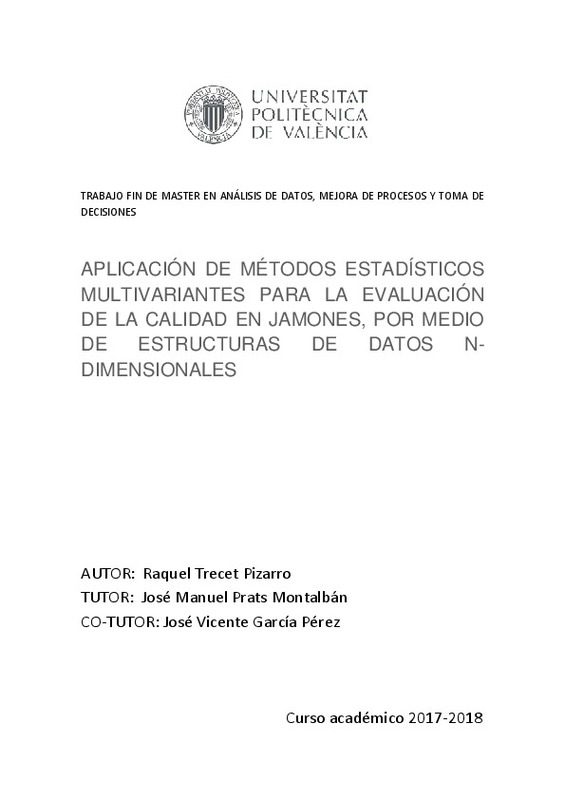JavaScript is disabled for your browser. Some features of this site may not work without it.
Buscar en RiuNet
Listar
Mi cuenta
Estadísticas
Ayuda RiuNet
Admin. UPV
Aplicación de métodos estadísticos multivariantes para la evaluación de la calidad en jamones, por medio de estructuras de datos N-dimensionales
Mostrar el registro completo del ítem
Trecet Pizarro, R. (2018). Aplicación de métodos estadísticos multivariantes para la evaluación de la calidad en jamones, por medio de estructuras de datos N-dimensionales. Universitat Politècnica de València. http://hdl.handle.net/10251/113879
Por favor, use este identificador para citar o enlazar este ítem: http://hdl.handle.net/10251/113879
Ficheros en el ítem
Metadatos del ítem
| Título: | Aplicación de métodos estadísticos multivariantes para la evaluación de la calidad en jamones, por medio de estructuras de datos N-dimensionales | |||
| Autor: | Trecet Pizarro, Raquel | |||
| Director(es): | ||||
| Entidad UPV: |
|
|||
| Fecha acto/lectura: |
|
|||
| Resumen: |
[ES] Este trabajo tiene como objeto explicar la pastosidad que presentan los jamones. La pastosidad es una característica de baja calidad que es medida a partir de personas especializadas con criterios gustativos y texturales, ...[+]
[EN] This work aims to explain the pastiness of hams. Pasture is a characteristic of low quality that is measured from specialized people with gustatory and textural criteria, through destructive and non-destructive tests, ...[+]
|
|||
| Palabras clave: |
|
|||
| Derechos de uso: | Reserva de todos los derechos | |||
| Editorial: |
|
|||
| Titulación: |
|
|||
| Tipo: |
|







